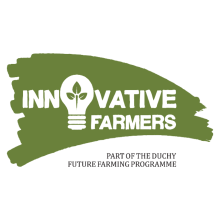How Trees Can Improve the Resilience of your Farm
Innovative Farmers 2016 Webinars
Some pointers on how you can use trees to improve your farm land and farm management.
Resource explained
This 17.54 minute Innovative Farmers webinar is one of a series that has been produced as part of the Duchy Future Farming programme. Introduced by the Soil Association, it features Peter Leeson, a Woodland Trust advisor, presenting on the various ways you can use trees to create improvements on your farm land. Peter says that “Trees are not going to be the answer to all the questions everywhere on a farm, however we hope trees can improve farm land and farm management if done in the right way and planted in the right place.” This webinar provides some pointers on how to do this, and outlines some of the many benefits that you can potentially achieve.
Findings & recommendations
- Trees and hedgerows can help with on-farm management of flooding, drought, soil erosion, pollution (caused by flooding), high winds, and transpiration. They can provide shade and shelter for stock, energy sources (wood fuel), and a second income through diversification i.e. combining fruit trees with other crops.
- 2.9 million tonnes of top soil is eroded annually in the UK, costing the agricultural sector £200million a year and polluting water bodies (with phosphates, nitrates and sediment). By planting trees and hedgerows appropriately around the contours of a field, you can use them to capture and slow down the movement of soil.
- Trees can be used to prevent or slow down erosion from rivers and streams and to help stabilise soils on slopes.
- Farmers in Pontbren used trees to provide more shelter for their stock, but also obtained big benefits in terms of water management and providing wood fuel.
- To provide the best shelter, make sure you incorporate lower growing shrubs such as hawthorn within hedgerows and copses, and ensure that hedgerows are free of gaps (to provide better wind coverage). Low shrubby dense plantations are particularly effective as wind barriers.
N.B. The link takes you to a page where you need to enter your name and email address before you can access the webinar. You can also access the accompanying power point presentation here.


